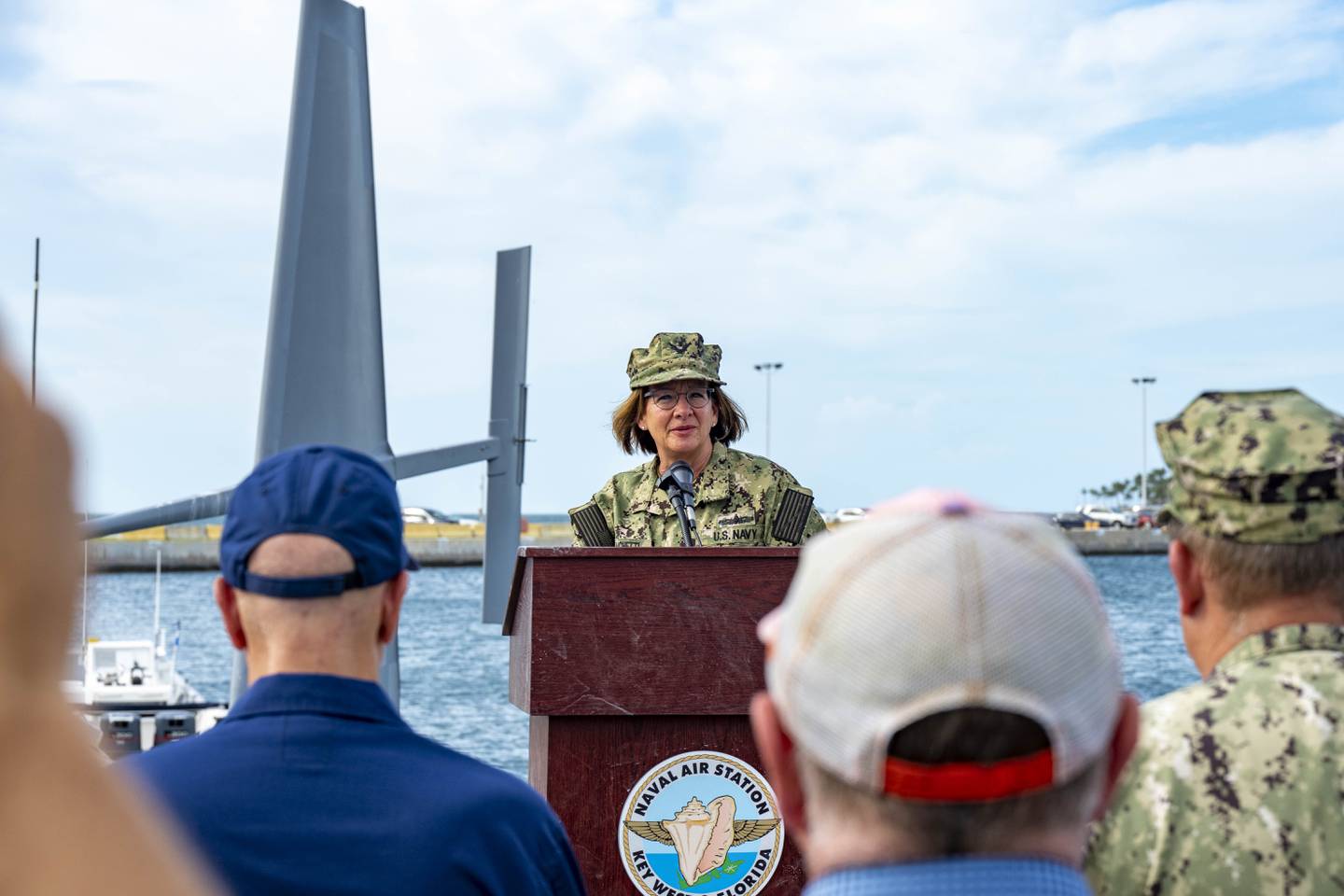NATIONAL HARBOR, Md. — The U.S. Navy needs to move its unmanned systems “beyond surveillance†roles and toward more consequential missions, according to Rear Adm. Kevin Smith, the service’s program lead on drones and small combatants.
This effort will include finalizing a vision for what role the Medium Unmanned Surface Vessel will play, with the range and payload capacity to do much more than the small drones currently conducting surveillance missions in the Middle East and Latin America, he said during a panel discussion at the Navy League’s annual Sea-Air-Space conference
The service is continuing down a path to incorporate unmanned technologies into routine fleet operations. One year into operating a hybrid manned-unmanned fleet, U.S. 4th Fleet is using unmanned surface vessels to map patterns of behavior and common trafficking routes in the Caribbean Sea and the Gulf of Mexico, Navy Secretary Carlos Del Toro said in a keynote speech at the event.
Rear Adm. James Aiken, the 4th Fleet commander, said during a panel discussion that these operations are beneficial.
“We’re putting unmanned vessels in the hands of operators, and so we see what the challenges are, being at sea for six, eight, nine months now with some of the unmanned surface vessels. And it really has challenged us†to reconsider where and how they employ these vessels, he explained.
Smith said during the same panel that learning by using basic unmanned systems — or the “minimum viable product,†as he put it — is important. But at some point, he added, “we need to get beyond surveillance†and begin using these sea drones for more warfare-focused operations.
To that end, he said, the Navy will conduct an analysis of alternatives this year to determine what payloads can equip the Medium Unmanned Surface Vessel. He added that this would go beyond surveillance and instead incorporate that information-gathering capability into the detect-identify-track-engage kill chain.

Also speaking at the conference, Chief of Naval Operations Adm. Lisa Franchetti said unmanned systems are not only tools for sailors but also “players on the field.â€
Asked by Defense News about the move beyond experiments and into routine operations with this hybrid fleet, Franchetti said she doesn’t want to squash the momentum of experimentation just yet, as sailors are collaborating with industry to find new uses for unmanned systems.
“The most important thing,†she explained†“is to cohere [lessons from experimentation] together into a concept of operations that can apply broadly across our Navy, and I’m really focused on getting to that point. But right now, I really like the fleets having this creative spirit unleashed and being able to get all their ideas out there, so then we can think about how would we elevate that into a concept of operations that we can train to, that we can resource to and that we can continue to use.â€
“I’m confident that the future of our Navy is going to be a mix of conventionally manned platforms with unmanned and autonomous platforms all teamed together, so these are all the building blocks that we need to take right now to be able to get there,†she added.
Even though 4th Fleet and 5th Fleet are focused on maritime domain awareness in support of counter-trafficking missions — whereas 7th Fleet focuses on using unmanned systems in support of sea denial and sea control missions — the CNO said there would have to be some sort of common concept of operations across the whole service.
“But you always need to have tailored concepts below it because each theater is different. The geostrategic environment is different. The adversaries are different. The partners are different. And so everything will need to be tailored to that,†Franchetti said. “But I think having a common understanding of the who, what, why we employ unmanned — I think that will be very important for our Navy going forward.â€
Megan Eckstein is the naval warfare reporter at Defense News. She has covered military news since 2009, with a focus on U.S. Navy and Marine Corps operations, acquisition programs and budgets. She has reported from four geographic fleets and is happiest when she’s filing stories from a ship. Megan is a University of Maryland alumna.








